LISTEN TO DEAD BALAGTAS: Our Latest Cool Rakistang Babaylan
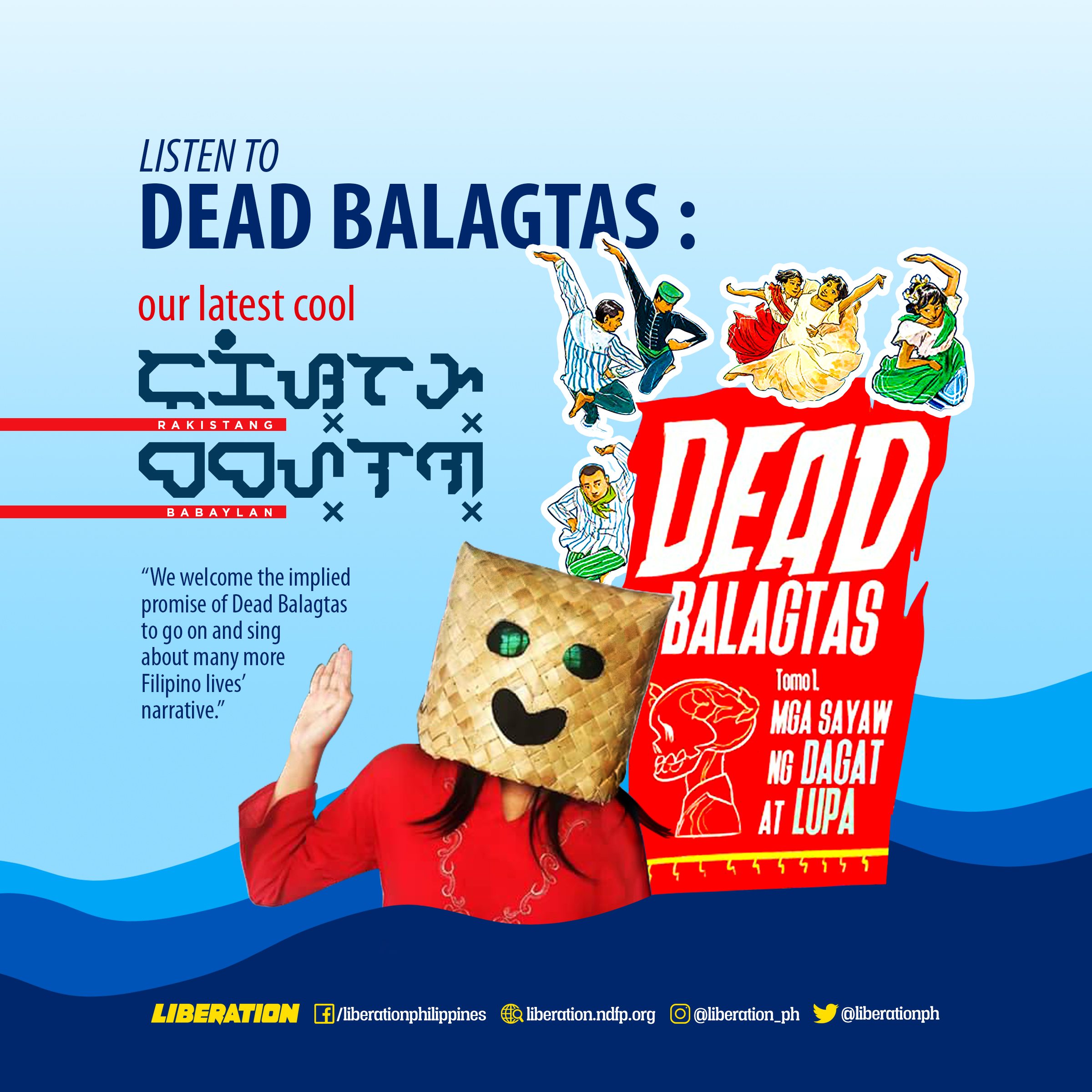
by Ava Sumera
Since its launching in late 2017 a lot has been said about Emiliana Kampilan’s first full-blown comics, Dead Balagtas tomo 1 Mga Sayaw ng Dagat at Lupa (The Dances of Sea and Land, Volume 1 of Dead Balagtas).
Despite the sad trend that the once huge Filipino serial comics publications ceased operation from the 90s to 2000s, we are happy to note that many Filipino artists including Kampilan have continued producing and publishing their works in zines and on the internet. Kampilan’s “Dead Balagtas” comics strips, released over Tumblr and WordPress and her social media, has cultivated a strong following and with good reasons. She is uniquely fusing her comics with history, nationalism, satire and many Filipino stories of love and laughter. As with other successful artists who have produced memorable comics, hers is honestly reflecting as well as saluting the revolutionary Filipino culture and struggle. In her comics she furnishes historical facts with contemporary vibe, steeped in the Filipino’s brand of wit and satire and Kampilan’s feminist and patriotic leanings.
On her first full comics book published by Adarna House, Kampilan delivered a daring cover featuring two same-sex dance partners moving in harmony, and another dance couple separated but looking at the same direction. She placed the dancers knee-deep into the blue waters of Philippine seas, creating a flamboyant cover that lures you, “Dive into me! Try Me! Dance with me.”
Dead Balagtas tomo 1 Mga Sayaw ng Dagat at Lupa (The Dances of Sea and Land, Volume 1 of Dead Balagtas), compiles four graphic stories two of which are unabashedly pro-LGBTQ and progressive. The first serving, about Santinakpan (universe), greatly differs from the three that followed it in design and content. It is a myth retold by Dead Balagtas herself, and it reads also as an announcement of more stories to follow.
Presented as “Created by Emiliana Kampilan and the Filipino People,” (underscoring ours), this first Tomo forays into relationships and character development that few (if any) illustrated children’s books in the Philippines have dealt with before.
That graphic stories like these have been published not as a zine but by an established publisher of children’s books speak a lot about the bridges artists can create with their signature use of colors, visual and “sound” patterns, science, history and social commentary. (The sound effects in Kampilan’s comics are mostly in baybayin, but the creator included a bookmark with a legend to help readers translate the baybayin.)
The opening story is a poetic smorgasboard about the creation of the universe. The narrator, Dead Balagtas, appears here like a babaylan rakista (rocker priestess). She began by intoning or praying while playing the kudyapi, asking the gods to bless her so she can correctly tell the stories.
Kampilan is reportedly intent on ramping up what artists could do with komix, and indeed, she executed some unusual paneling in Dead Balagtas’ story of creation from the time the universe was all darkness to the time Tungking Langit started creating and he and Laon Sina got married. But, later, in a lovers’ spat that generated further bursts of creation, Laon Sina disappeared and Tungking Langit went looking for her everywhere.
From there, we welcome the implied promise of Dead Balagtas to go on and sing about many more Filipino lives’ narrative. For now, let’s appreciate the love and understanding her comics generate for friends who might start close and yet drift apart, and people who might “collide” and thereafter enrich their life.
The next three stories in Dead Balagtas’ first offering trace, in this order: (1) the story of two friends (girl and boy) and how their lives drift apart as in tectonic shifts over the years; (2) a gay couple who transcended not just the social pressure to conceal their true sexual preference but also the divide between white and blue collar workers, and the religious leaders’ misuse of church teachings to discriminate against being gay. And (3) the story of two women in a relationship who find personal and career uplift (and growing political awareness as well as acceptance and support of their family) amid their steadfast support of each other.
It is amazing how Kampilan has crammed her komix panels with nuanced character development. She delivers a solid gift and reverberating call for understanding the LGBTQ, the ordinary hardworking employees of mall chains, call centers, the critical and nationalist job seeker, the prayerful Muslims, the activists such as the volunteers of Gabriela women’s alliance, etc. This is clearly something good to emulate despite or especially because misogynistic government leaders keep disrespecting the LGBTQ, the workers, the women, and the activists.
In the last story of the first tomo Kampilan presented characters directly criticizing exploitation and finding solutions to the agonizing problems in this country through activism. And Kampilan did it without coming across as didactic, boring, or uncool, as other reviewers seem to have feared would happen when artists espoused social conscience.
This is a great example of what art could do, reflect the love and struggle of the masses in an inspiring way. In the last story, Kampilan tenderly shows each of the women going through the ups and downs in their “careers” given the kinds of jobs available (which they could stomach) in the Philippines. One of them had to resign from a government job because she can’t allow herself to lie about the country’s real jobs data.
Outside of Dead Balagtas’ tomo 1, Kampilan produces or collaborates in producing brave zines and stickers.
Here’s to hoping Kampilan will follow through on the next tomo with narratives of even more Filipinos who find affirmation, love, laughter and color and bigger family in living their life resisting society’s prejudices, fighting exploitation and oppression.
Here’s to hoping also that she would shed light on why she goes to literary gatherings hiding her face under a bayong. As a lover of history, she couldn’t have failed to know that the “makapili” donned bayong as they informed on the guerrillas in the Second World War. It is understandable, of course, if her motive is the opposite of the Makapili, and that she’s only protecting herself. But why bayong?
Here’s to hoping also that in the next tomo, we will learn more about the narrator, babaylan extraordnaire, Dead Balagtas. ###
[Dead Balagtas Tomo 1 Mga Sayaw ng Dagat at Lupa is written and illustrated by Emiliana Kampilan. It is published by Adarna House Inc. in Quezon City, Philippines in 2017.]
—–
VISIT and FOLLOW
Website: https://liberation.ndfp.info
Facebook: https://fb.com/liberationphilippines
Twitter: https://twitter.com/liberationph
Instagram: https://instagram.com/liberation_ph

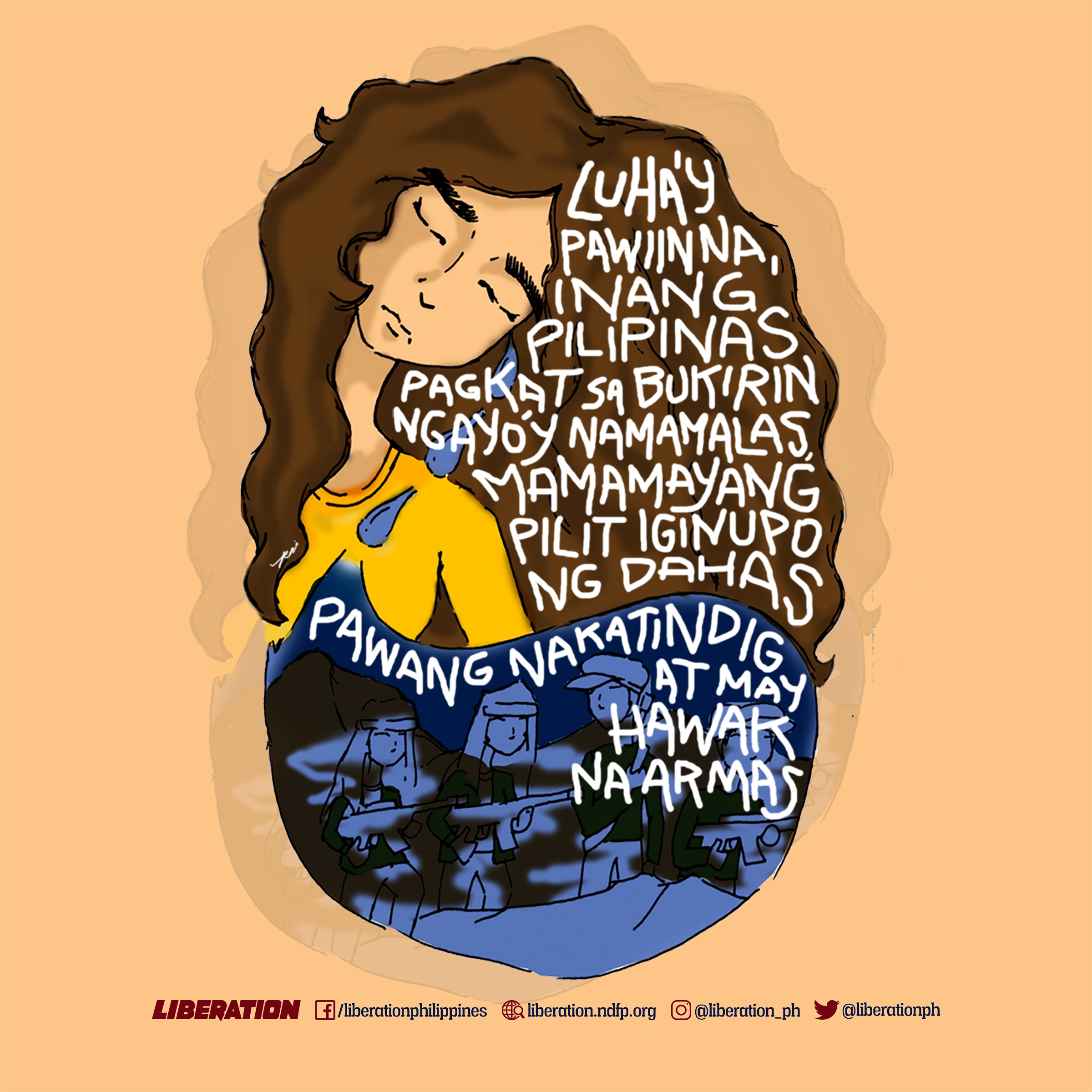
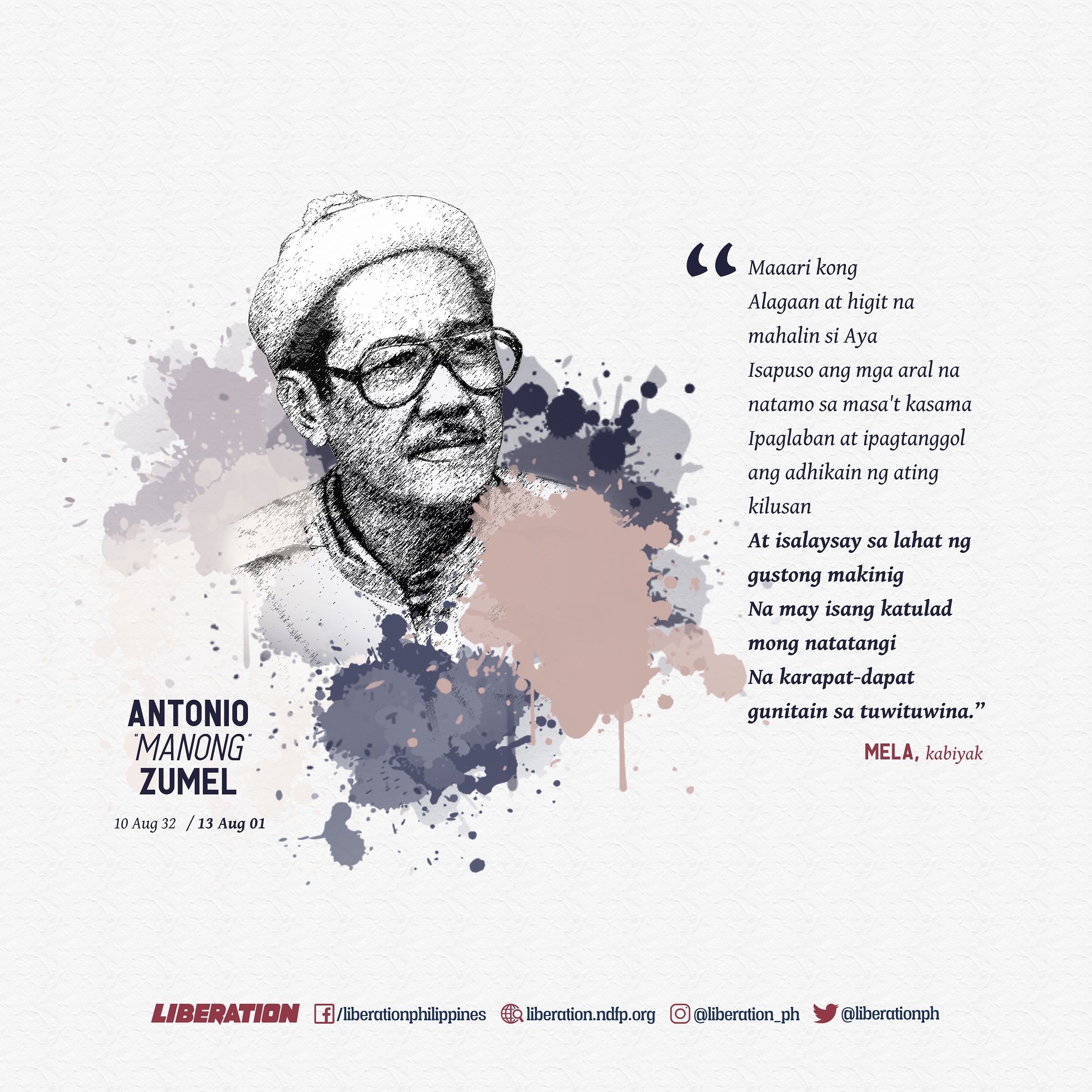
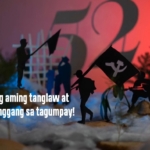
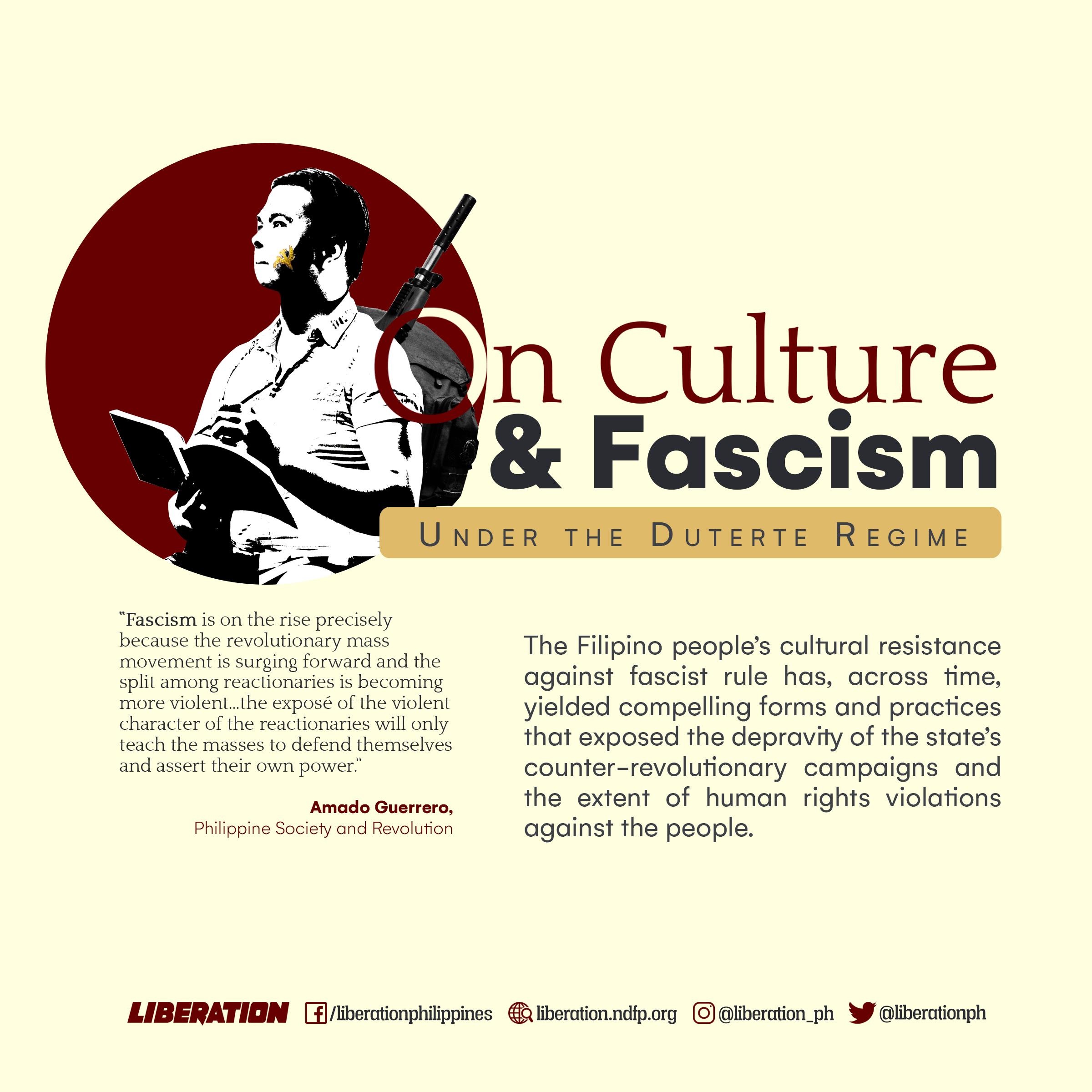
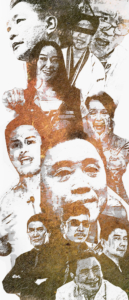 by Alejo Nicolas
by Alejo Nicolas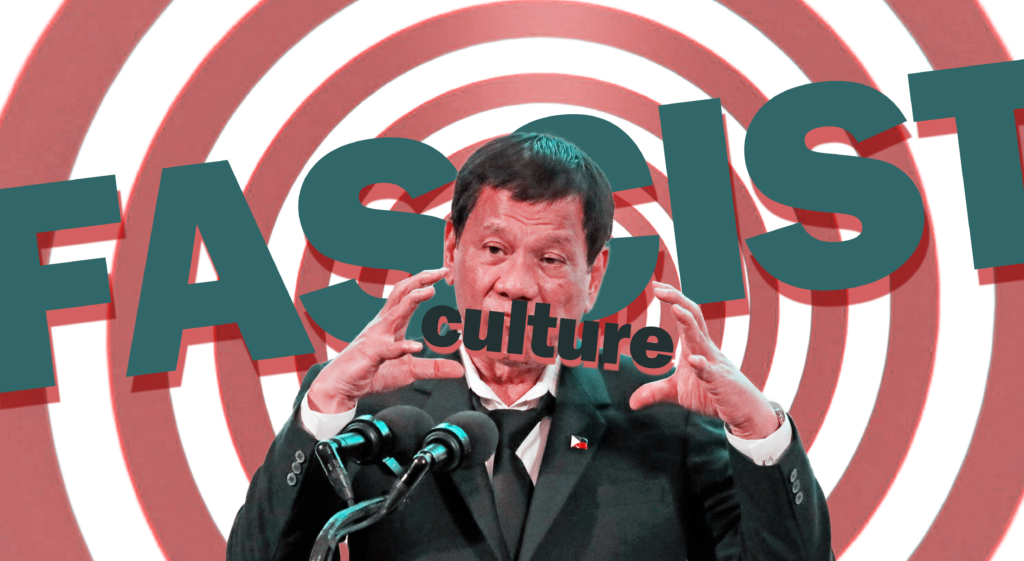 Signs of tyranny
Signs of tyranny Art and culture for the anti-fascist struggle
Art and culture for the anti-fascist struggle

